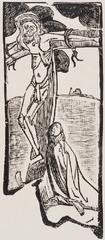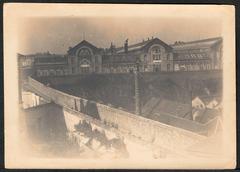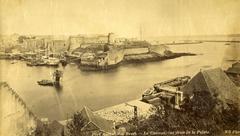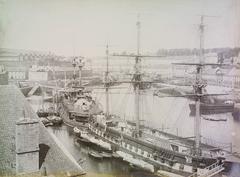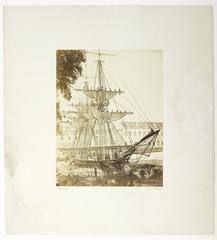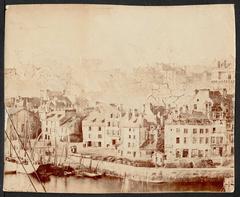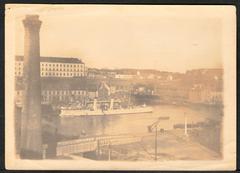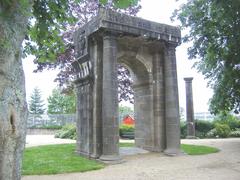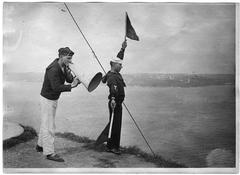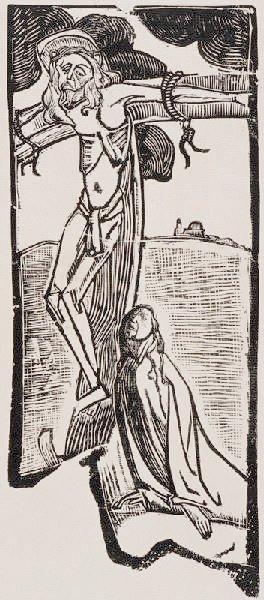
Visiting Brest Museum of Fine Arts: Tickets, Hours, and Key Highlights
Date: 19/07/2024
Introduction
The Brest Museum of Fine Arts, known in French as the ‘Musée des Beaux-Arts de Brest,’ serves as a vital repository of artistic and cultural heritage in Brittany, France. Established officially in 1875 but with origins tracing back to the early 19th century, the museum aims to decentralize cultural institutions and make art accessible to the public outside of Paris. Initially composed of modest donations from local enthusiasts and pieces transferred from the Louvre, the museum’s collection has since grown to encompass an impressive array of European and French paintings, Breton art, and contemporary exhibitions (Musée des Beaux-Arts de Brest).
The museum’s history is marked by resilience and transformation, especially during World War II when Brest was heavily bombed, leading to the destruction of the original museum building in 1941. Remarkably, many artworks had been evacuated to safer locations, preserving a significant portion of the collection. The post-war period saw a concerted effort to rebuild, culminating in the inauguration of a new building designed by architect Jean-Baptiste Mathon in 1968. Since then, the museum has continued to expand and modernize, enhancing its facilities to improve the visitor experience (Brest Museum History).
Today, the Brest Museum of Fine Arts stands as a testament to the city’s cultural richness and historical resilience. Its diverse collections, educational programs, and architectural significance make it a must-visit destination for art lovers and cultural enthusiasts alike. Whether you’re interested in the timeless beauty of Renaissance paintings, the vibrant colors of Breton art, or the latest contemporary exhibitions, this comprehensive guide will provide all the information you need to make the most of your visit.
Table of Contents
- Introduction
- History of the Brest Museum of Fine Arts
- Notable Collections and Exhibitions
- Visitor Information
- Travel Tips and Nearby Attractions
- Special Events and Guided Tours
- Photographic Spots
- Educational and Cultural Role
- Architectural Significance
- Future Prospects
- Key Figures and Milestones
- FAQ
- Conclusion
History of the Brest Museum of Fine Arts
Origins and Establishment
Officially established in 1875, the Brest Museum of Fine Arts has a storied history that dates back to the early 19th century. Following a decree by the French government, the museum aimed to promote arts and culture in regional cities. The initial collection was modest, comprising donations from local art enthusiasts and pieces transferred from the Louvre Museum in Paris. This initiative was part of a broader movement during the Third Republic to decentralize cultural institutions and make art accessible to the public outside of Paris (Musée des Beaux-Arts de Brest).
World War II and Reconstruction
The museum’s history took a dramatic turn during World War II. Brest, a strategic port city, was heavily bombed by Allied forces, resulting in significant destruction. The original museum building was completely destroyed in 1941. However, many artworks had been evacuated to safer locations before the bombings, preserving a substantial part of the collection. The post-war period saw a concerted effort to rebuild the museum. In 1968, a new building designed by architect Jean-Baptiste Mathon was inaugurated, marking a new chapter in the museum’s history (Brest Museum History).
Expansion and Modernization
The latter half of the 20th century and the early 21st century have been periods of expansion and modernization for the Brest Museum of Fine Arts. The museum has continually expanded its collection through acquisitions and donations, focusing on both classical and contemporary art. Significant renovations were undertaken in the early 2000s to modernize the facilities and improve the visitor experience, including climate control systems and new exhibition spaces (Brest Museum Renovations).
Notable Collections and Exhibitions
European Paintings
The Brest Museum of Fine Arts boasts an impressive collection of European paintings spanning from the 16th to the 20th centuries. The museum’s collection includes works by renowned artists such as Pieter Brueghel the Younger, known for his detailed and vibrant depictions of peasant life. One of the highlights is his painting “The Adoration of the Magi,” which exemplifies his intricate style and use of color (source).
French Paintings
The museum’s French painting collection is particularly strong in works from the 19th and early 20th centuries. Notable artists include Eugène Boudin, a precursor of Impressionism, whose seascapes and beach scenes capture the light and atmosphere of the Normandy coast. Another significant artist in the collection is Jean-Baptiste-Camille Corot, whose landscapes are celebrated for their poetic quality and influence on the Barbizon School (source).
Breton Art
Given its location in Brittany, the museum places a special emphasis on Breton art. This includes works by artists who were inspired by the region’s unique landscapes and cultural heritage. Among them is Paul Sérusier, a key figure in the Pont-Aven School, whose painting “The Talisman” is a cornerstone of the museum’s collection. Sérusier’s work is characterized by its bold use of color and simplified forms, reflecting the influence of Paul Gauguin (source).
Temporary Exhibitions
Contemporary Art
The Brest Museum of Fine Arts regularly hosts temporary exhibitions that showcase contemporary art. These exhibitions often feature works by both established and emerging artists, providing visitors with a glimpse into the latest trends and developments in the art world. Recent exhibitions have included works by artists such as Pierre Soulages, known for his exploration of black and light, and Annette Messager, whose installations often address themes of identity and memory (source).
Thematic Exhibitions
The museum also organizes thematic exhibitions that explore specific art movements, historical periods, or cultural themes. These exhibitions are often curated in collaboration with other institutions and feature loans from major museums around the world. For example, a recent exhibition titled “Impressionism and the Sea” brought together works by artists such as Claude Monet, Édouard Manet, and Gustave Courbet, highlighting the importance of maritime subjects in the development of Impressionism (source).
Special Collections
Maritime Art
Reflecting Brest’s maritime heritage, the museum has a significant collection of maritime art. This includes paintings, prints, and models that depict the history of seafaring and naval warfare. One of the standout pieces is a large-scale model of the ship “Le Soleil Royal,” which provides a detailed look at the design and construction of 17th-century French warships. The collection also includes works by marine painters such as Joseph Vernet, whose dramatic seascapes capture the power and beauty of the ocean (source).
Decorative Arts
The museum’s decorative arts collection includes a wide range of objects, from ceramics and glassware to furniture and textiles. Highlights include a collection of faience pottery from Quimper, a town in Brittany known for its distinctive hand-painted designs. The collection also features Art Nouveau and Art Deco pieces, including works by renowned designers such as Émile Gallé and René Lalique (source).
Visitor Information
Ticket Prices
- Adults: €8
- Students and seniors: €5
- Children under 12: Free
- Group rates available on request
Opening Hours
- Tuesday to Sunday: 10:00 AM - 6:00 PM
- Closed on Mondays and public holidays
Accessibility
The museum is wheelchair accessible, with ramps and elevators available for visitors with mobility issues. Audio guides and guided tours are also available in multiple languages.
Travel Tips and Nearby Attractions
Getting There
The museum is located in the city center, easily accessible by public transport. The nearest bus stop is ‘Musée,’ served by several bus lines.
Nearby Attractions
Consider visiting other historical sites in Brest, such as the Brest Castle and the Tour Tanguy. The National Botanical Conservatory of Brest is also nearby and worth a visit.
Special Events and Guided Tours
The museum hosts a variety of special events throughout the year, including art workshops, lectures, and concerts. Guided tours are available, offering deeper insights into the museum’s collections and history. Check the museum’s official website for the latest schedule and booking information.
Photographic Spots
The Brest Museum of Fine Arts offers several picturesque spots for photography enthusiasts. The large windows flood the interior with natural light, creating beautiful settings for capturing the art and architecture. Don’t miss the sculptures and contemporary installations for unique photo opportunities.
Educational and Cultural Role
Beyond its role as a repository of fine art, the Brest Museum of Fine Arts plays a crucial educational and cultural role in the community. The museum offers a range of educational programs for children and adults, including guided tours, workshops, and lectures. These programs aim to foster an appreciation for the arts and provide opportunities for lifelong learning. The museum also collaborates with local schools and universities, integrating art education into the broader curriculum. Additionally, the museum serves as a cultural hub, hosting concerts, theater performances, and other cultural events throughout the year (Brest Museum Educational Programs).
Architectural Significance
The architecture of the Brest Museum of Fine Arts is noteworthy in its own right. The current building, designed by Jean-Baptiste Mathon, is a fine example of mid-20th-century modernist architecture. The design emphasizes simplicity and functionality, with clean lines and open spaces that allow for the optimal display of artworks. The building’s façade features large windows that flood the interior with natural light, creating a welcoming and airy atmosphere. The museum’s architecture has been praised for its ability to harmonize with the surrounding urban landscape while providing a contemporary space for the display of art (Brest Museum Architecture).
Future Prospects
Looking to the future, the Brest Museum of Fine Arts continues to evolve and adapt to the changing cultural landscape. Plans are underway to further expand the museum’s collection and enhance its facilities. The museum is also exploring new ways to engage with the public, including the use of digital technologies to create virtual exhibitions and interactive experiences. These initiatives aim to make the museum more accessible and relevant to a broader audience, ensuring its continued significance as a cultural institution in the 21st century (Brest Museum Future Plans).
Key Figures and Milestones
Several key figures have played pivotal roles in the history of the Brest Museum of Fine Arts. Among them is Jean-Baptiste Mathon, the architect who designed the current building. His vision and expertise were instrumental in creating a modern space that meets the needs of both the artworks and the visitors. Another notable figure is the museum’s first director, Charles Lenoir, who oversaw the initial establishment of the collection and laid the groundwork for the museum’s future growth. Over the years, various directors and curators have contributed to the museum’s development, each bringing their unique perspective and expertise to the institution (Brest Museum Key Figures).
FAQ
What are the Brest Museum of Fine Arts opening hours?
- The museum is open from Tuesday to Sunday, 10:00 AM - 6:00 PM, and closed on Mondays and public holidays.
How much are tickets for the Brest Museum of Fine Arts?
- Tickets are €8 for adults, €5 for students and seniors, and free for children under 12. Group rates are available on request.
Is the museum wheelchair accessible?
- Yes, the museum is wheelchair accessible, with ramps and elevators.
Conclusion
The Brest Museum of Fine Arts stands as a testament to the resilience and cultural richness of the city of Brest. From its humble beginnings in the 19th century to its current status as a leading cultural institution, the museum has continually adapted and evolved. Its diverse collection, educational programs, and architectural significance make it a must-visit destination for art lovers and cultural enthusiasts alike. Visit the official website for more information, and follow the museum on social media for the latest updates. Plan your visit today and immerse yourself in the artistic wonders of the Brest Museum of Fine Arts.
